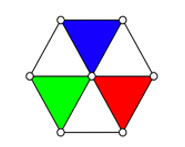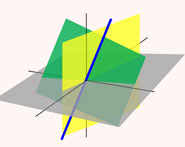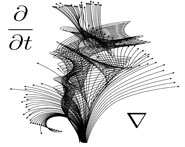


 تاريخ الرياضيات
تاريخ الرياضيات
 الرياضيات في الحضارات المختلفة
الرياضيات في الحضارات المختلفة 
 الرياضيات المتقطعة
الرياضيات المتقطعة
 الجبر
الجبر
 الهندسة
الهندسة 
 المعادلات التفاضلية و التكاملية
المعادلات التفاضلية و التكاملية 
 التحليل
التحليل
 علماء الرياضيات
علماء الرياضيات |
Read More
Date: 25-12-2017
Date: 25-12-2017
Date: 1-1-2018
|
Died: 25 November 2008 in Zürich, Switzerland

Beno Eckmann was brought up in Bern where he attended the Gymnasium obtaining his Diploma in 1935. He then entered the Eidgenössische Technische Hochschule Zürich where he was taught mathematics by a number of outstanding mathematicians. Eckmann fully appreciated the importance of this aspect in his mathematical development writing [1]:-
I feel that the best thing that can happen to a University mathematician is to have good teacher and/or good students; I was fortunate enough to have both. With regard to good teachers it certainly suffices if I mention names: Heinz Hopf, Plancherel, Pólya, Bernays. As a student I attended their courses and seminars and was introduced in an unusually personal way to the world of mathematics.
Eckmann graduated with his Master's Degree from the Eidgenössische Technische Hochschule Zürich (ETH) in 1939. He was the appointed as an Assistant to Plancherel while he worked for his doctorate under Hopf. Eckmann explains how these two provided a remarkable foundation for his career in [1]:-
As an assistant to Plancherel I had the opportunity to work, and even lecture, in different fields, including analysis. Under the wonderful guidance of Heinz Hopf I then got into my doctoral thesis work. It was characteristic of Hopf's views on our science that this meant not only learning algebraic topology - then a very young field - but also getting acquainted with group theory, differential geometry, and algebra in the "abstract" sense of the Emmy Noether school. The combination of these fields, considered at that time to be largely separated from each other, remained a constant challenge during all my later work ...
In 1941 Eckmann was awarded his Dr. sc. math. (equivalent to a Ph.D.) from ETH Zürich. He submitted a thesis which was judge quite outstanding, even relative to the high standards they had, and Eckmann was awarded the Kern Prize and silver medal for his work. After the award of the doctorate he remained at Zürich as a Privatdozent until 1942 when he appointed as a lecturer at the University of Lausanne.
The most important person to influence Eckmann during his years at the University of Lausanne was Georges de Rham who was an extraordinary professor there when Eckmann arrived and became full professor in 1943. Eckmann writes:-
My first University appointment was in Lausanne 1942-48 where close contacts with Georges de Rham provided friendship and stimulation.
While holding the position in Lausanne, Eckmann visited the Institute for Advanced Study at Princeton. He arrived there in January 1947 and remained there for most of the year, returning to Lausanne in September. This gave him:-
... the possibility of concentrated research and meeting so many mathematicians whose names had been familiar before, when contacts were not possible because of the war.
In 1948 Eckmann, who had already been promoted to Extraordinary Professor at Lausanne, was offered a full Professorship back at the Eidgenössische Technische Hochschule Zürich. It was an opportunity that he certainly was not going to turn down and, pleased to be back, he remained as Professor there until he retired in 1984. He did, however, make many visits as a visiting professor. For example he was a visiting Professor at the University of Michigan during the summer of 1950, the University of Illinois during the winter of 1952, the University of California at Berkeley during the summer of 1955 and the Scuola Normale Superiore in Pisa in the spring of 1958.
An important change in Eckmann's duties in Zürich occurred in 1964. In that year the Forschungsinstitut für Mathematik (mathematics Research Institute) was founded in Zürich. Eckmann was appointed as Head of the Institute and he held this position until he retired in 1984. He writes that the Institute was:-
... designed especially for the purpose of inviting visitors to cooperate with the department members and their students. The Institute rapidly developed into a well-known international centre of mathematics research; needless to say, it was of great benefit to me ...
In April 1977 a Colloquium was held in Zürich to celebrate Eckmann's 60th birthday. Saunders Mac Lane spoke at the Colloquium about Eckmann's contributions to the founding of homological algebra and category theory. Peter Hilton, who had been a personal friend of Eckmann's for many years spoke in detail of Eckmann's research in topology: continuous solutions of systems of linear equations, a group-theoretical proof of the Hurwitz-Radon theorem, complexes with operators, spaces with means, simple homotopy type. Details of these research contributions are given in [2].
Hilton described Eckmann's contributions to mathematics as being described by the names:-
... unification, clarification and penetration.
Eckmann, [1], expresses his thanks to Peter Hilton for their many years of collaborations:-
I am deeply grateful, not only for stimulation and sharing so many ideas with me, but also for his friendship ...
It was not only with Peter Hilton that Eckmann collaborated. Rather collaboration was what he liked to do and many of his research papers arose from these collaborations, many of which were with his students.
Finally we should comment on other roles which Eckmann held and honours which he has received. He was Secretary to the International Mathematical Union from 1956 to 1961, President of the Swiss Mathematical Society in 1961-62, and a member of the research Council of the Swiss National Science Foundation from 1964 to 1984. He received honorary degrees from Fribourg in 1964, Lausanne Polytechnique in 1969, and the Israel Institute of Technology in 1983. He was also awarded the Prix Mondial Nessim Habif from the University of Geneva in 1967.
Books:
Articles:



|
|
|
|
لخفض ضغط الدم.. دراسة تحدد "تمارين مهمة"
|
|
|
|
|
|
|
طال انتظارها.. ميزة جديدة من "واتساب" تعزز الخصوصية
|
|
|
|
|
|
|
مشاتل الكفيل تزيّن مجمّع أبي الفضل العبّاس (عليه السلام) بالورد استعدادًا لحفل التخرج المركزي
|
|
|